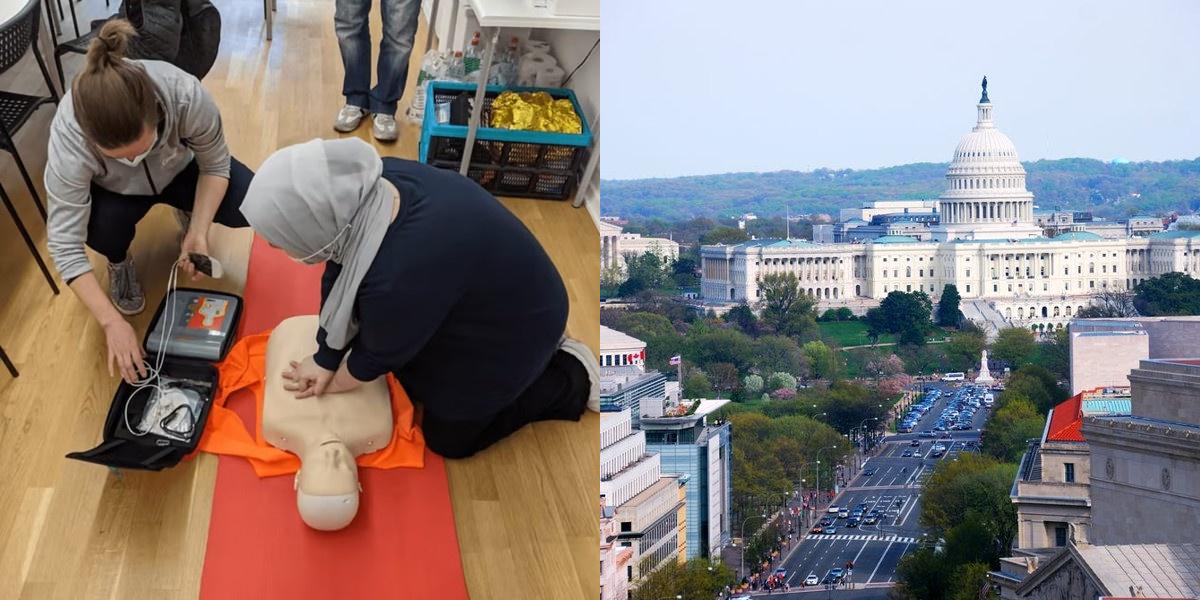What is a Paramedic
Paramedics are highly trained medical professionals who provide emergency medical care to individuals in need. They play a crucial role in the healthcare system by responding to emergency calls, assessing patients' conditions, and providing necessary medical treatment or transportation to the hospital.
Responsibilities of a Paramedic include:
- Assessing patients' conditions and determining the appropriate course of action.
- Administering medications, performing medical procedures, and providing advanced life support interventions.
- Communicating with medical professionals, such as doctors and nurses, to relay important information about the patients' condition.
- Operating and maintaining medical equipment, such as defibrillators and ventilators.
- Keeping accurate records of patient care and treatment provided.
Work Environment
Paramedics can work in a variety of settings, including:
- Ambulance Services: Most paramedics work for ambulance services, responding to emergency calls and providing on-site medical care.
- Hospitals: Some paramedics work in hospital emergency departments, providing immediate medical care to patients upon their arrival.
- Fire Departments: Many fire departments employ paramedics who respond to medical emergencies alongside firefighters.
- Specialized Teams: Paramedics can also work on specialized teams, such as search and rescue or disaster response teams.
How to Become a Paramedic in District of Columbia?
To become a Paramedic in District of Columbia, one must first complete an accredited Paramedic training program, which typically takes 1-2 years. After graduating, individuals must pass the National Registry of Emergency Medical Technicians (NREMT) exam to obtain their Paramedic certification. With this certification, they can then search for Paramedic job opportunities in the District of Columbia.
Requirements to Become a Paramedic in District of Columbia
To become a paramedic in District of Columbia, you must meet certain educational and legal requirements. These include:
- Education: You must complete a paramedic training program approved by the District of Columbia Department of Health. These programs typically include both classroom instruction and hands-on clinical experience.
- Certification: After completing your training program, you must pass the National Registry of Emergency Medical Technicians (NREMT) paramedic certification exam.
- Licensure: Once you have obtained your NREMT certification, you must apply for a license through the District of Columbia Department of Health to practice as a paramedic in the District.
How do I get my Paramedic certification?
If you have a passion for emergency medical services and want to work as a paramedic, getting your paramedic certification is the first step. Becoming a paramedic requires a combination of education, training, and certification. Here's a step-by-step guide on how to get your paramedic certification:
1. Meet the basic requirements: Before pursuing paramedic certification, you need to meet the basic requirements. These requirements may vary depending on the state or program you choose, but generally include being at least 18 years old, having a high school diploma or GED, and possessing a valid driver's license.
2. Complete a state-approved paramedic training program: Paramedic training programs are offered by community colleges, technical schools, and universities. These programs typically take 1-2 years to complete and include both classroom instruction and hands-on clinical experience. It's important to choose a program that is accredited by the Commission on Accreditation of Allied Health Education Programs (CAAHEP) or the Committee on Accreditation of Educational Programs for the Emergency Medical Services Professions (CoAEMSP).
3. Gain practical experience through clinical rotations: As part of your paramedic training program, you'll be required to complete clinical rotations in various healthcare settings, such as hospitals and ambulance services. These rotations provide hands-on experience and allow you to apply the knowledge and skills you've learned in the classroom.
4. Obtain CPR certification: CPR (Cardiopulmonary Resuscitation) certification is a prerequisite for paramedic certification. You'll need to complete a CPR course and obtain certification from an accredited provider, such as the American Heart Association or the American Red Cross.
5. Pass the National Registry of Emergency Medical Technicians (NREMT) exam: The NREMT exam is a national certification exam that assesses your knowledge and skills as a paramedic. It consists of both a cognitive (written) exam and a psychomotor (practical) exam. Passing the NREMT exam is a requirement for paramedic certification in most states.
6. Apply for state paramedic certification: Once you've successfully completed your paramedic training program and passed the NREMT exam, you can apply for state paramedic certification. The requirements for state certification may vary, but typically include submitting an application, paying a fee, and providing proof of your education, training, and NREMT certification.
7. Maintain your paramedic certification: Paramedic certification is not a one-time process. To maintain your certification, you'll need to meet ongoing requirements, such as completing continuing education courses and periodically renewing your certification. This ensures that you stay up-to-date with the latest advancements in emergency medical services and maintain your competency as a paramedic.
How do I get a job as a Paramedic?
Getting a job as a paramedic requires more than just obtaining your paramedic certification. Here are some steps you can take to increase your chances of finding a job as a paramedic:
1. Gain experience as an EMT: Before becoming a paramedic, many individuals start their careers as Emergency Medical Technicians (EMTs). Working as an EMT allows you to gain valuable experience in the field of emergency medical services and provides a solid foundation for further advancement as a paramedic. Consider working as an EMT while pursuing your paramedic certification.
2. Network with professionals in the field: Networking is a powerful tool for finding job opportunities. Attend industry conferences, join professional associations, and connect with paramedics and other healthcare professionals on social media platforms like LinkedIn. Building relationships and connecting with people already working in the field can help you learn about job openings and increase your chances of getting hired.
3. Prepare a professional resume and cover letter: Your resume and cover letter are your first impressions to potential employers. Make sure they are well-crafted, professional, and highlight your relevant skills, experience, and qualifications. Tailor your resume to the specific job you're applying for, emphasizing your paramedic training, clinical experience, and any specialized skills or certifications you possess.
4. Apply to job openings: Keep an eye out for job openings at local hospitals, ambulance services, fire departments, and other healthcare facilities. Many paramedic job openings are also posted on job search websites and professional association websites. Apply to multiple positions and follow up on your applications to demonstrate your interest and commitment.
5. Prepare for job interviews: Job interviews are an opportunity for employers to assess your suitability for the role. Prepare for interviews by researching the organization, practicing common interview questions, and preparing examples of how you've demonstrated your skills and abilities in previous experiences. Dress professionally, arrive on time, and be confident and enthusiastic during the interview.
6. Consider additional certifications or specializations: Paramedics can specialize in various areas of emergency medical services, such as critical care, flight medicine, or tactical medicine. Consider pursuing additional certifications or specializations that align with your interests and career goals. These additional qualifications can make you a more competitive candidate and open up more job opportunities.
7. Stay up-to-date with industry trends: The field of emergency medical services is constantly evolving. Stay informed about the latest advancements, technologies, and best practices in the industry. Attend conferences, participate in continuing education courses, and read industry publications to stay current and demonstrate your commitment to professional development.
Career Paths and Opportunities after Becoming a Paramedic
Becoming a paramedic opens up a wide range of career paths and opportunities. Here are some of the career options you can explore after becoming a paramedic:
-
Emergency Medical Services (EMS) Provider: Many paramedics work for ambulance services, responding to emergency calls and providing pre-hospital care to patients. As an EMS provider, you may work in a variety of settings, such as urban areas, rural communities, or specialized EMS agencies. These roles often involve working in high-pressure and fast-paced environments, requiring quick decision-making and the ability to handle stressful situations.
-
Fire Department: Paramedics are often employed by fire departments, where they provide emergency medical care as part of a firefighting team. In addition to responding to medical emergencies, paramedics working in fire departments may also be involved in fire suppression, hazardous material incidents, and other emergency response activities. Working for a fire department can provide a unique combination of medical and firefighting skills.
-
Hospital Emergency Department: Paramedics can also work in hospital emergency departments, providing immediate medical care to patients who arrive by ambulance or walk-in. In this role, paramedics work closely with other healthcare professionals, such as doctors and nurses, to stabilize patients and ensure they receive the appropriate care. Working in a hospital setting allows paramedics to be part of a larger healthcare team and provides opportunities for career advancement.
-
Flight Paramedic: Flight paramedics provide critical care and medical transportation to patients in remote or inaccessible locations. They work alongside pilots and other crew members in helicopters or fixed-wing aircraft to provide advanced medical care during transport. Flight paramedics must undergo additional training and certification to work in this specialized field and often work in high-stress and high-demand environments.
-
Specialized EMS Teams: Paramedics can join specialized EMS teams, such as tactical paramedics or disaster response teams. Tactical paramedics provide medical support in high-risk situations, such as SWAT operations or hostage situations, while disaster response teams provide medical assistance in the aftermath of natural disasters or mass casualty incidents. These roles require additional training and often involve working in challenging and unpredictable environments.
-
Education and Training: Some paramedics choose to pursue careers in education and training, sharing their knowledge and experience with aspiring paramedics. They may work as instructors in paramedic training programs, teach continuing education courses, or develop educational materials and curriculum. Working in education and training allows paramedics to contribute to the growth and development of the profession.
-
Management and Administration: Paramedics with strong leadership and organizational skills may choose to pursue careers in management or administration. They may work as EMS supervisors, overseeing the operations of ambulance services or emergency departments. They may also work in roles such as EMS directors, quality improvement managers, or emergency preparedness coordinators. These roles involve managing teams, ensuring compliance with regulations, and overseeing the delivery of high-quality patient care.






